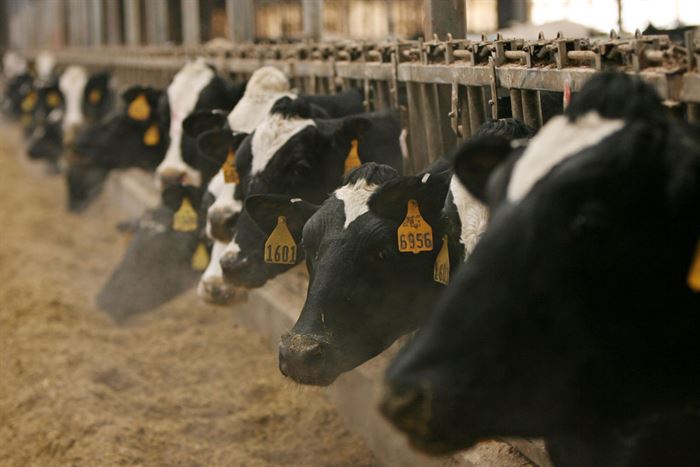5.4.17 | Cap Times | Erik Lorenzsonn | Original Publication

Siri and Alexa already help you find your keys and remember friends’ birthdays. So maybe it’s not such a stretch that they could also manage a few hundred cattle.
Computer scientists and dairy experts at the University of Wisconsin-Madison and the UW Extension are collaborating to create a suite of computer programs that can help with dairy farming — a “virtual brain” that uses artificial intelligence to help farmers with day-to-day decision-making.
According to Victor Cabrera, a UW-Madison dairy science professor and the project’s principal investigator, modern farms are already equipped with sophisticated data-collecting technology. Cows wear sensors that can track heat and motion, giving farmers insight into whether a cow may be in heat or ill. Soil and crop monitoring systems influence feeding decisions. Milking robots keep track of which cows are fidgety, whether a cow’s udders are healthy, the composition of the milk a cow produces.
“All of this information exists,” said Cabrera. “A big leap we want to do in this project is connect different sources of information.”
Integrating the different streams of data would be the first step. Then, the challenge would be to fuse prior research on agricultural data with machine learning — in other words, computer programs that have been taught to adapt based on new information — to create artificial intelligence systems that can assess that data in real time.
That AI could provide insights to help farmers in all kinds of ways, said Cabrera. Consider reproductive decisionmaking, he said. When it comes to selecting animals to breed, farmers have to use their old-fashioned human brains to consider multiple sources of data, from semen quality to a cow’s market value to a heifer’s fertility.
“In a farm brain, it should be able to do that on the fly,” he said.
Same for milking parlor decisions, said Cabrera. A dairy farm AI could help farmers weed out cows that for whatever reason end up taking a longer time to milk, and adjust milking schedules accordingly.
“It’s simple, but it’s actually a great help to the farmers,” said Cabrera. “If you have a group being milked, that one cow can delay the whole group of animals.”
Cabrera noted that this would ideally be a real-time system of applications that would ping farmers with prescriptive and predictive suggestions in real time.
“When the farm comes into the office, they should be told by the system, this cow should not be bred anymore,” he said. “And for this cow, they should be bred with better semen.”
The three-year research project to create the brain is still in its nascent stages. Cabrera said that the core group of scientists working on the brain are still putting together a team and looking at potential grants, but that the work should begin in earnest this summer. He said that they have found a “progressive” farm located in south-central Wisconsin that has volunteered to be the project’s guinea pig.
The project is among 21 proposals that recently received money through the UW2020 awards initiative, which looks to give a boost to high-risk, innovative research ventures.